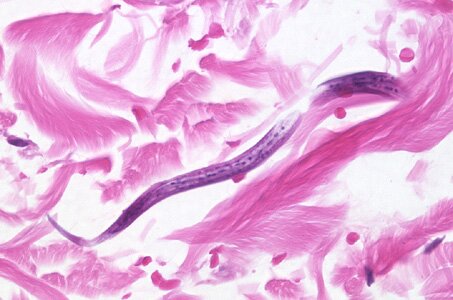Strongyloides stercoralis

 Strongyloides stercoralis. Strongyloides stercoralis is one of few parasites that can live independently in soil, rich in minerals. It occurs in tropical and semi-tropical countries. People can be infected by touching filiform invasive larvas. The infection causes a disease concerning the alimentary canal, if you want to read a populist or more comprehensive scientific article, you need healthcare assignment help, then you can fully understand the topic.
Strongyloides stercoralis. Strongyloides stercoralis is one of few parasites that can live independently in soil, rich in minerals. It occurs in tropical and semi-tropical countries. People can be infected by touching filiform invasive larvas. The infection causes a disease concerning the alimentary canal, if you want to read a populist or more comprehensive scientific article, you need healthcare assignment help, then you can fully understand the topic.
A female form of Strongyloides stercoralis is a tiny 2mm-long nematode. It lives in the duodenum and leiunum mucosa membrane, rarely in the lung tissue. They lay eggs in tissues, from which rabdoidal larvas are hatched. Then they exit the body with faeces or they are coughed out. Sometimes rabdoidal larvas, still in the bowel or in the anus area, can develop into invasive filarial forms which might infect others. The infection might last for decades.
Infection sources
Larvas get into the body through the skin on the feet or buttocks, leaving blush skin changes itching and withering lasting a couple of hours or days. Short-term line lesions on the abdomen and anus come into being as a result of auto-invasion of a person who is already infected. During strongyloides stercoralis’ way through the lungs tissue, Loeffler’s infiltrations might appear. Less intense invasions result in small lesions in the mucosa membrane and the small bowel.
Strongyloides stercoralis symptoms:
- stomachache
- diarrhoea
- anus ichiness
- skin lesions
- a feeling of weakness
- excitement
- cough
- short of breath
Massive invasions cause lesions in the duodenum and leiunum.






